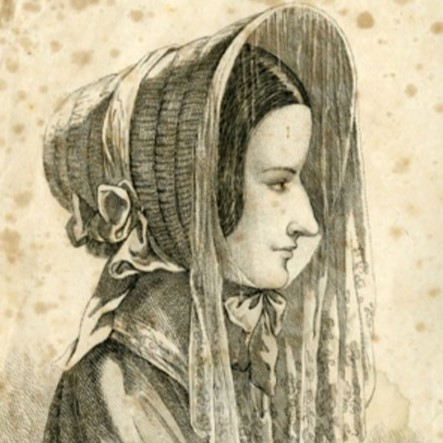
1816 - 1852
Marie-Fortunée Lafarge
Summary
Name:
Marie-Fortunée LafargeYears Active:
1840Birth:
January 15, 1816Status:
DeceasedClass:
MurdererVictims:
1Method:
PoisoningDeath:
November 07, 1852Nationality:
France
1816 - 1852
Marie-Fortunée Lafarge
Summary: Murderer
Name:
Marie-Fortunée LafargeStatus:
DeceasedVictims:
1Method:
PoisoningNationality:
FranceBirth:
January 15, 1816Death:
November 07, 1852Years Active:
1840Date Convicted:
September 19, 1840bio
Marie-Fortunée Lafarge was born on January 15, 1816, in Paris, France. She was the daughter of an artillery officer. Marie had a notable ancestry. Her grandmother, Hermine, Baroness Collard, was said to be a descendant of a liaison between Stéphanie Félicité, comtesse de Genlis, and Louis Philippe II, Duke of Orléans.
Tragedy struck when Marie was just 12 years old. She lost her father in a hunting accident. Her mother remarried soon after and died seven years later, leaving Marie without both parents. At the age of 18, Marie was adopted by her maternal aunt. Her aunt was married to the secretary-general of the Bank of France. Though her aunt treated her well and sent her to good schools, their relationship was often strained. Marie was constantly reminded of her status as a poor relative.
While attending an elite school, Marie made friends with the daughters of wealthy families. She tried her best to convince them that she, too, came from a rich background. However, Marie felt envious when she saw her friends marrying into noble families. By the time she turned 23 and remained unmarried, her family felt it was important to find her a husband. One of her uncles took it upon himself to find a suitable match for her. He engaged a marriage broker, which led to finding only one potential husband.
This potential husband was Charles Pouch-Lafarge. He was 28 years old and the son of a justice of the peace. Charles was not the wealthy man he claimed to be. Instead, he had considerable debt. Nonetheless, Marie agreed to marry him, partly due to pressure from her family and her own hope for a better life. The marriage took place on August 10, 1839.
After getting married, Marie and Charles moved to his estate in Le Glandier. It became clear shortly after their arrival that the estate was damp and poorly maintained. Marie found herself disappointed. Instead of the luxurious life she had imagined, she was faced with financial struggles and an unpleasant living situation.
murder story
Marie-Fortunée Lafarge was involved in a series of events that led to the suspicion and eventual death of her husband, Charles Lafarge. After a troubled marriage marked by disappointment, Charles fell ill shortly after he returned from a trip to Paris. Marie had sent him food during his trip, which he consumed upon his return.
Charles showed symptoms that were similar to cholera, which were common at the time and often misdiagnosed. During his illness, Marie asked for a prescription for arsenic, claiming it was to deal with rats that bothered him. As Charles continued to suffer, his relatives became concerned and started to watch over him.
Marie gave him various food and drinks, including eggnog and soup. Witnesses later reported seeing her add a white powder to these items. Charles became increasingly ill after consuming them. One cousin, Anna, grew suspicious of Marie's actions, especially after noticing flakes in the eggnog.
When Charles passed away on January 13, 1840, the family thought it could be due to poisoning. An investigation began, uncovering that Marie had obtained arsenic. The local justice took samples of food and drink from the household for testing. Initial tests suggested that no arsenic was found in his body, but further investigation proved that some items Marie had given him did contain arsenic.
Marie was arrested shortly after, and during her trial, evidence was presented that suggested she used arsenic to poison her husband. The trial gained much media attention and divided public opinion. Ultimately, she was found guilty and sentenced to life in prison. After several years, she was released due to health issues but died shortly after. Her case raised questions about forensic science and justice in the 19th century.